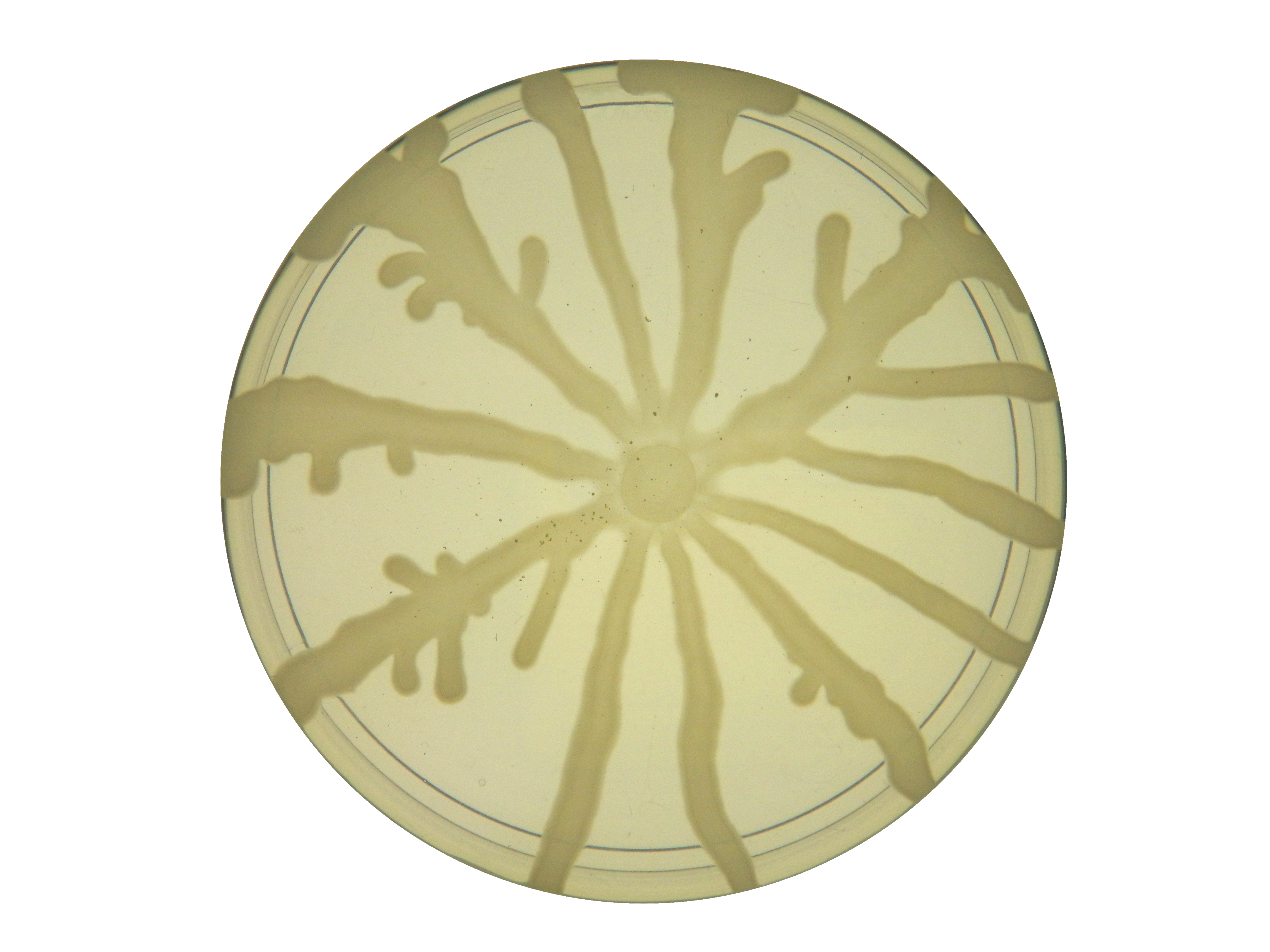|
Dienes Phenomenon
Dienes phenomenon, when two identical Proteus cultures are inoculated at different points on the same plate of non-inhibitory medium, the resulting swarming of growth coalesce without signs of demarcation. When, however, two different strains of Proteus are inoculated, the spreading films of growth fail to coalesce and remain separated by a narrow easily visible area. The observation of this appearance, the Dienes phenomenon has been used to determine the identity or non-identity of strains in epidemiological studies Epidemiology is the study and analysis of the distribution (who, when, and where), patterns and risk factor, determinants of health and disease conditions in a defined population. It is a cornerstone of public health, and shapes policy decision .... References Bacteriology {{Bacteria-stub ... [...More Info...] [...Related Items...] OR: [Wikipedia] [Google] [Baidu] |
Proteus (bacterium)
''Proteus'' is a genus of Gram-negative bacteria. ''Proteus'' bacilli are widely distributed in nature as saprophytes, being found in decomposing animal matter, sewage, manure soil, the mammalian intestine, and human and animal feces. They are opportunistic pathogens, commonly responsible for urinary and septic infections, often nosocomial. The term Proteus signifies changeability of form, as personified in the Homeric poems in Proteus, "the old man of the sea", who tends the sealflocks of Poseidon and has the gift of endless transformation. The first use of the term “Proteus” in bacteriological nomenclature was made by Hauser (1885), who described under this term three types of organisms which he isolated from putrefied meat. Clinical significance Three species—'' P. vulgaris'', '' P. mirabilis'', and '' P. penneri''—are opportunistic human pathogens. ''Proteus'' includes pathogens responsible for many human urinary tract infections. ''P. mirabilis'' causes ... [...More Info...] [...Related Items...] OR: [Wikipedia] [Google] [Baidu] |
Inoculation
Inoculation is the act of implanting a pathogen or other microorganism. It may refer to methods of artificially inducing immunity against various infectious diseases, or it may be used to describe the spreading of disease, as in "self-inoculation," the spreading of disease from one part of the body to another, or even to the spreading of bacteria in a Petri dish for culturing purposes. The terms "inoculation", " vaccination", and " immunization" are often used synonymously, but there are some important differences among them. Inoculation is the act of implanting a disease inside a person or animal, vaccination is the act of implanting or giving someone a vaccine specifically, and immunization is what happens to the immune system as a result. Terminology Until the early 1800s inoculation referred only to variolation (from the Latin word ''variola'' = smallpox), the predecessor to the smallpox vaccine. The smallpox vaccine, introduced by Edward Jenner in 1796, was called cowpo ... [...More Info...] [...Related Items...] OR: [Wikipedia] [Google] [Baidu] |
Swarming Motility
Swarming motility is a rapid (2–10 μm/s) and coordinated translocation of a bacterial population across solid or semi-solid surfaces, and is an example of bacterial multicellularity and swarm behaviour. Swarming motility was first reported by Jorgen Henrichsen and has been mostly studied in genus '' Serratia'', ''Salmonella'', ''Aeromonas ''Aeromonas'' is a genus of Gram-negative, facultative anaerobic, rod-shaped bacteria that morphologically resemble members of the family Enterobacteriaceae. Most of the 14 described species have been associated with human diseases. The most imp ...'', '' Bacillus'', '' Yersinia'', '' Pseudomonas'', '' Proteus'', '' Vibrio'' and '' Escherichia''. This multicellular behavior has been mostly observed in controlled laboratory conditions and relies on two critical elements: 1) the nutrient composition and 2) viscosity of culture medium (i.e. % agar). One particular feature of this type of motility is the formation of dendritic fractal-like pa ... [...More Info...] [...Related Items...] OR: [Wikipedia] [Google] [Baidu] |
Epidemiology
Epidemiology is the study and analysis of the distribution (who, when, and where), patterns and determinants of health and disease conditions in a defined population. It is a cornerstone of public health, and shapes policy decisions and evidence-based practice by identifying risk factors for disease and targets for preventive healthcare. Epidemiologists help with study design, collection, and statistical analysis of data, amend interpretation and dissemination of results (including peer review and occasional systematic review). Epidemiology has helped develop methodology used in clinical research, public health studies, and, to a lesser extent, basic research in the biological sciences. Major areas of epidemiological study include disease causation, transmission, outbreak investigation, disease surveillance, environmental epidemiology, forensic epidemiology, occupational epidemiology, screening, biomonitoring, and comparisons of treatment effects such as in clinical t ... [...More Info...] [...Related Items...] OR: [Wikipedia] [Google] [Baidu] |


